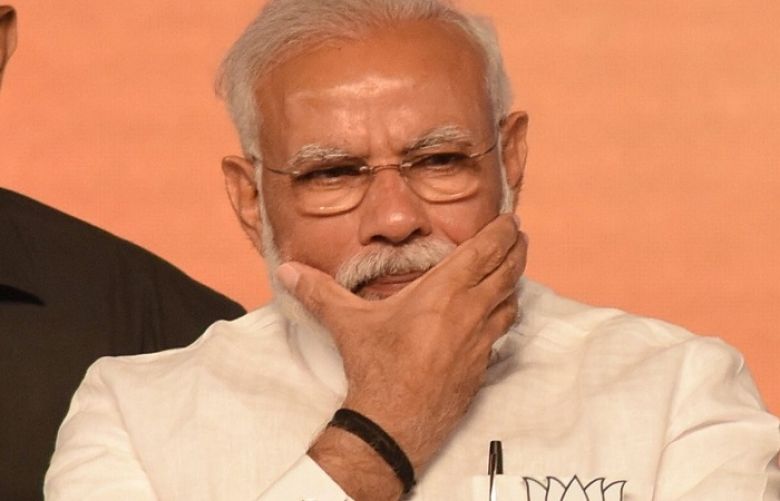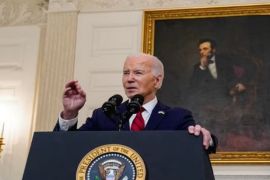The mass-circulation Time magazine has featured Indian Prime Minister Narendra Modi as India’s “divider-in-chief” on the cover of its international editions, as the country enters the final phase of the general election.
But Time’s cover of its U.S. edition is devoted to US Senator Elizabeth Warren, one of the women candidates for the Democratic party’s presidential nomination.
In a stinging cover story for the magazine, entitled, “Can the world’s largest democracy endure another five years of a Modi government?”, Indian journalist and novelist Aatish Taseer sharply criticized Modi for promoting Hindu nationalism, targeting Indian Muslims and failing to implement his 2014 promises for jobs and better economic management that had resulted in undercutting his popularity.
“Modi now finds himself seeking to hold power in a climate of febrile nationalism, with a platform whose themes have much more to do with national security and profiting from recent tensions between India and Pakistan than with economic growth,” Taseer wrote.
A second article in the magazine, by Ian Bremmer — who is president and founder of Eurasia Group, a political risk research and consulting firm — treats Modi far more positively, claiming that Modi is “India’s best hope” for economic reform.
Taseer starts his article saying that in 2014, India became the “first of the great democracies to fall to populism”. According to him, Modi won those elections riding on hope but this time “whatever else might be said…hope is off the menu”.
The article says that Modi’s ascension in 2014 showed that “beneath the surface of what the elite had believed was a liberal syncretic culture, India was indeed a cauldron of religious nationalism, anti-Muslim sentiment and deep-seated caste bigotry”.
Taseer’s article notes that “If in 2014 he (Modi) was able to exploit differences in order to create a climate of hope, in 2019 he is asking people to stave off their desperation by living for their differences alone.
“Then he was a messiah, ushering in a future too bright to behold, one part Hindu renaissance, one part South Korea’s economic programme. Now he is merely a politician who has failed to deliver, seeking re-election. Whatever else might be said about the election, hope is off the menu,” he says.
In 2014, Modi converted cultural anger into economic promise. He spoke of jobs and development. Taking a swipe at the socialist state, he famously said, ‘Government has no business being in business’. That election, though it is hard to believe now, was an election of hope, the article says.
“Not only has Modi’s economic miracle failed to materialize, he has also helped create an atmosphere of poisonous religious nationalism in India,” Taseer writes.
Far from his promise of development for all, he has achieved a state in which Indians are increasingly obsessed with their differences, according to the article.
On Congress — India’s oldest party — he said it has no more political imagination than to send Priyanka Gandhi – Rahul Gandhi’s sister – to join her brother’s side. It would be equivalent to America’s Democratic Party fielding Hillary Clinton again in 2020, with the added enticement of her daughter Chelsea as Vice President.
“Modi is lucky to be blessed with so weak an opposition – a ragtag coalition of parties, led by the Congress, with no agenda other than to defeat him. Even so, doubts assail him, for he must know he has not delivered on the promise of 2014. It is why he has resorted to looking for enemies within,” he wrote.
About the plight of Muslims, Taseer wrote:
“India’s Muslims, who make up some 14% of the population, have been subjected to episode after violent episode, in which Hindu mobs, often with what seems to be the state’s tacit support, have carried out a series of public lynchings in the name of the holy cow, that ready symbol of Hindu piety.
Hardly a month goes by without the nation watching agog on their smartphones as yet another enraged Hindu mob falls upon a defenseless Muslim. The most enduring image of Modi’s tenure is the sight of Mohammad Naeem in a blood-soaked undershirt in 2017, eyes white and enlarged, begging the mob for his life before he is beaten to death.
The response of leadership in every instance is the same: virtual silence. Basic norms and civility have been so completely vitiated that Modi can no longer control the direction of the violence. Once hatred has been sanctioned, it is not always easy to isolate its target, and what the BJP has discovered to its dismay is that the same people who are willing to attack Muslims are only too willing to attack lower-caste Hindus as well.
The party cannot afford to lose the lower-caste vote, but one of the ugliest incidents occurred in Modi’s home state of Gujarat, in July 2016, when upper-caste men stripped four lower-caste tanners, paraded them in the streets and beat them with iron rods for allegedly skinning a cow.”
Taseer describes Modi’s record on women’s issues as “spotty”. He also criticizes the appointment of Rashtriya Swayamsevak Sangh ideologue S Gurumurthy to the board of the Reserve Bank of India, and calls Uttar Pradesh Chief Minister Adityanath a “hate-mongering priest in robes of saffron”.
“As India votes this month, the irony of those words is not lost on anyone,” the Taseer says about Modi’s slogan “Sabka Saath Sabka Vikas”.







